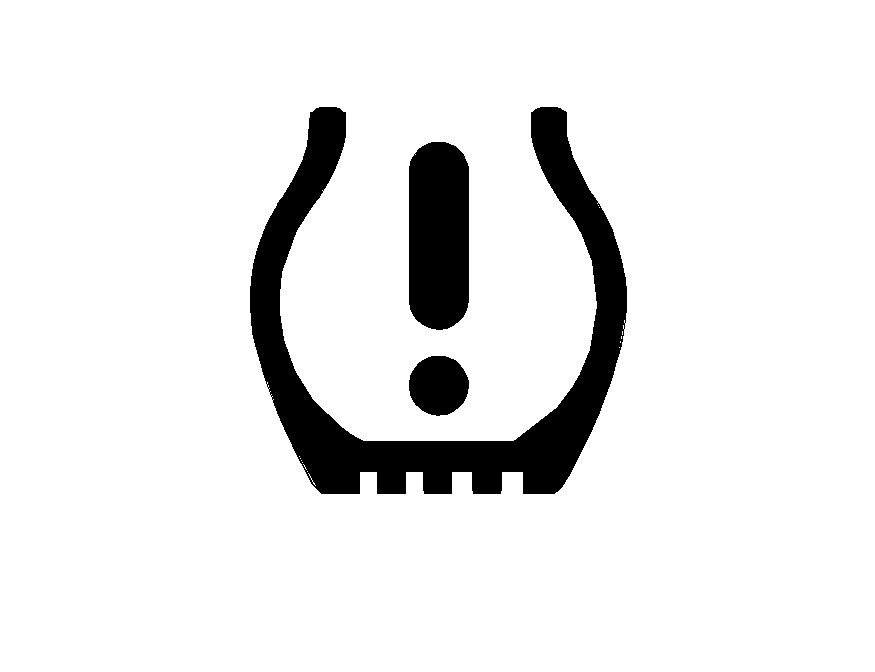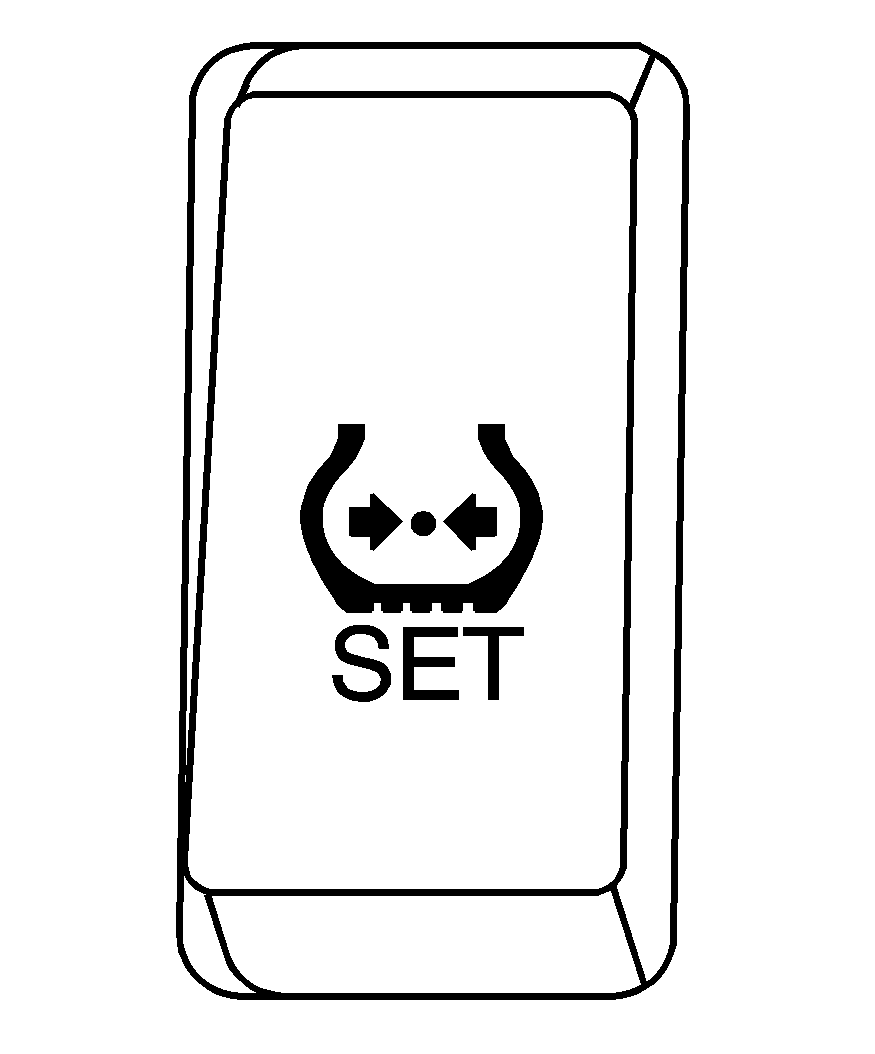If your vehicle has this feature, it is designed to alert you when the system
detects a large change in the pressure of one tire. The system cannot alert you before
you drive that a tire is low or flat. You must begin driving before the system will
work properly. The system works with the brake control system and is designed to detect
differences in the tire rotation speeds that are caused by changes in tire pressure.
The tire pressure monitoring system does not replace normal tire maintenance, see
Tires
,
Tire Inspection and Rotation
and
When It Is Time for New Tires
.

This light, on the instrument panel cluster, comes on when the tire pressure
monitoring system detects a low-tire condition.
This light will also come on for a few seconds and then go off when you turn
the ignition to ON. This indicates that the tire pressure monitoring system is functioning
properly. If the low-tire pressure warning light comes on while driving your
vehicle, the system may have detected a low-tire condition. You need to stop
as soon as possible and check your tires for damage. If a tire is flat, see
If a Tire Goes Flat
and
Changing a Flat Tire
. Also check the tire pressure in all four tires,
and set them to the specified level shown on the tire and loading label. See
Inflation - Tire Pressure
for additional information.
Note: The tire pressure monitoring system on your
vehicle will warn you when one of your tires is significantly under-inflated
and when some combinations of your tires are significantly under-inflated.
However, there are other combinations of significantly under-inflated tires for which
your tire pressure monitoring system may not warn you. These other combinations are
relatively common, accounting for approximately half the instances in which vehicles
have significantly under-inflated tires. For example, your system may not warn
you when both tires on the same side or on the same axle of your vehicle are significantly
under-inflated. It is particularly important, therefore, for you to check the tire
pressure in all of your tires regularly and maintain proper pressure.
In order for the tire pressure monitoring system to work properly you will need
to reset (initialize) the tire pressure monitoring system. Any time you check and/or
adjust a tire's pressure, repair or replace a tire or wheel or rotate the tires the
tire pressure monitor system needs to be reset.
Do not reset (initialize) the system without first correcting the cause of the
low-tire condition. If the system is reset when the tire pressures are incorrect,
the system will not function properly and may not alert you when a tire is low.
To reset (initialize) the system:
- Park the vehicle at a safe place and apply the parking brake. Turn the
engine off.
- Turn the ignition to ON with the engine off.

- If the low-tire pressure warning light is on,
push the SET (reset) button for a few seconds. The low-tire warning light should
go off. The reset button is on the instrument panel to the left of the steering wheel.
- Press and hold the SET (reset) button until the low-tire warning light
comes on and flashes on/off three times. The tire pressure warning reset button starts
the reset (initialization) process.
If the low-tire pressure warning
light does not flash when you hold the reset button the system may be malfunctioning
and needs service. See your GM dealer for service.
The system completes the reset (initialization) process after driving at vehicle
speeds of at least 19 mph (30 km/h) to 62 mph (100 km/h) for more than
one hour. Do not push the SET (reset) button while driving, if you do the initialization
process will not be performed. The initialization process can take up to approximately
one hour of driving under the following conditions:
| • | The vehicle speed is between 31 mph (50 km/h) and 62 mph (100 km/h). |
| • | The roads are dry, smooth and straight. |
| • | The number of passengers is one or two (including the driver). |
The low-tire pressure warning light may not come on even if the tire
inflation pressure is low, or it may come on when the tire inflation pressure is set
correctly under the following circumstances:
| • | A compact spare tire, snow tires, or tire chains are installed on your
vehicle. |
| • | The tires are over-inflated, or the tire inflation pressure suddenly
drops due to a tire bursting or other causes. |
| • | The vehicle is driven on a slippery road surface such as rough or frozen
roads. |
| • | The vehicle speed is less than 19 mph (30 km/h),
and the driving duration is less than five minutes. |
| • | The tires are made by a different manufacturer or differ in tread pattern
than the original equipment tires. |
| • | Rapid acceleration/deceleration or multiple consecutive sharp turns. |
| • | The vehicle is loaded over the limit or not balanced properly. |
| • | The initialization (reset) procedure was not performed correctly after
replacing or rotating tires or wheels. |
| • | The outside temperature is below 32°F (0°C) or above 104°F
(40°C). |


